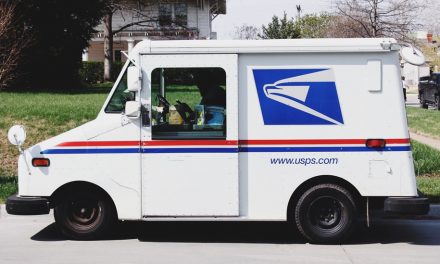
US Postal Service Customers Accept June 30 Rate Rise
The U.S. Postal Service has reached agreements with many of its major customers on a plan to raise postal rates June 30, three months earlier than projected, bringing a swifter infusion of money to the financially struggling agency.
While the rate increases would generate an additional $4.2 billion a year — and the agency would gain about $1 billion from the three-month difference in timing — a spokesman says the Postal Service would still require the $5 billion it wants from Congress to pay for emergency needs brought on by the Sept. 11 terrorist and anthrax attacks.
The cost of a first-class stamp would rise from 34 cents to 37 cents as part of an overall package that boosts rates for direct-mail marketers, magazine publishers, non-profits and others.
"If the parties can agree to this settlement and it works smoothly, it would be good for the mailers and for us," said USPS spokesman Gerry Kreienkamp.
The Postal Service first presented the rate package to its board of governors on Sept. 11, at a meeting that convened just before the attacks on the World Trade Center and Pentagon. But the process usually takes a year or more to complete, with months of hearings in which the independent Postal Rate Commission elicits testimony from customers and others before making its decision.
Although the early rate increase appears likely, it remains subject to review by the commission and the board of governors. The commission began hearings on the proposed rate hikes last month, but suspended them as the nation's major mailers began signing off on the plan.
In the wake of the Sept. 11 terrorist strikes and the anthrax attacks via the mail, the Postal Service suddenly faced a steep drop in mail volume and revenue and a more severe budget crunch than it already was struggling with. Postmaster General John E. Potter told a Senate panel in November that the agency projected $2 billion in losses this fiscal year, on top of $3 billion in expenses to buy devices to detect and kill anthrax spores. Potter said the agency hoped to obtain financial help from Congress to avoid pursuing even higher rates.
The Postal Service is an independent federal agency that typically does not receive taxpayer money for operations. Officials said Congress agreed to provide $500 million in emergency assistance to help in the recovery this fiscal year.
In hopes of providing additional relief, Postal Rate Commission Chairman George A. Omas suggested that USPS and its customers reach settlements to avoid the time and costs of months of hearings. If the effort succeeds, it will mark the first time that a rate increase was put on the fast track. The board of governors will receive an update on the progress of those talks at its meeting today, and the commission will review progress this week, although no final decisions are expected until this spring.
The customers signing the agreement include some heavyweights in the mailing industry, such as the Magazine Publishers of America, the Direct Marketing Association, the Association for Postal Commerce and the Alliance of Nonprofit Mailers. Also in the fold is Shelley Dreifuss, acting director of the Office of Consumer Advocate, an arm of the Postal Rate Commission that represents first-class senders and other mail users.
For big customers, the settlement is a way to avoid the prospect of USPS seeking a steeper increase in light of the post-Sept. 11 demands. Potter has now said he does not intend to seek another increase before Sept. 30, meaning that the rates, if approved, would most likely remain at their new levels for a year or longer.
"More than anything, the mailers are doing our share to prop up the Postal Service in this emergency atmosphere," said Neal Denton, executive director of the Alliance of Nonprofit Mailers. But he said the Postal Service still must trim costs while seeking help from Congress for long-term stability.
That view was echoed by Gene Del Polito, president of the Association for Postal Commerce, a trade group of heavy mail users, who noted that some rates went up twice last year. "For us, this was a matter of take what you can, a little earlier, at a smaller rate, or become obstinate and ultimately lose the case anyway and wind up with a higher rate," he said.
The last increase in the cost of first-class stamps was a one-cent rise in January 2001, to 34 cents. In addition to the three-cent increase for first-class stamps, the new rates would raise the cost of Express Mail by 9.7 percent; Priority Mail, 13.5 percent; periodicals, 10 percent; advertising mail, 7.3 percent; and packages, 8.9 percent.
© 2002 The Washington Post Company












